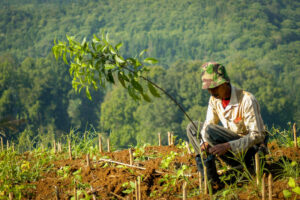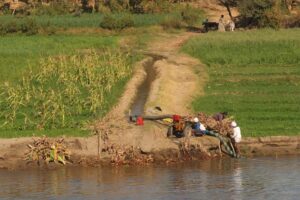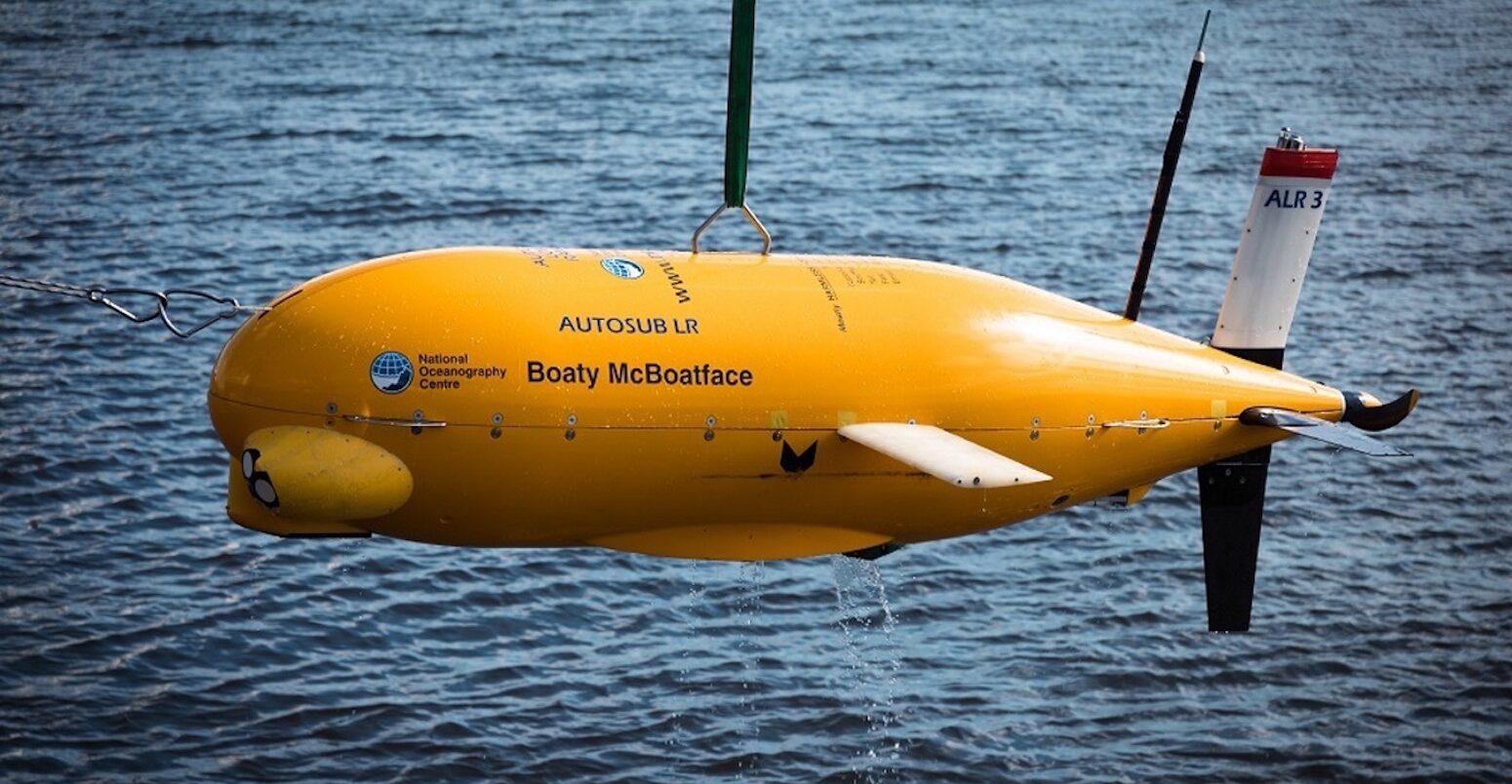
Guest post: How Boaty McBoatface is becoming instrumental for ocean science

Dr Alexander Phillips
04.06.23
Dr Alexander Phillips
06.04.2023 | 12:21pmIn 2016, the Natural Environment Research Council (NERC) launched a campaign to crowd-source a name for the UK’s next world-class polar research ship.
The poll did not go quite as expected.
The runaway winner for the name of the royal research ship (RRS) that would replace the RRS James Clark Ross and RRS Ernest Shackleton was “Boaty McBoatface”. With more than 120,000 votes, the name comfortably triumphed ahead of suggestions including “Usain Boat” and “It’s Bloody Cold Here”.
The ship was subsequently named the RRS Sir David Attenborough, in honour of the veteran broadcaster and naturalist, but the public popularity of the name Boaty McBoatface could not be ignored.
The following year, the National Oceanography Centre (NOC) announced that its three new autonomous underwater vehicles (AUVs) would proudly carry the name.
These robot submarines – around 3.5 metres long and 80cm in diameter – are being used to explore the world’s oceans without the need of a human pilot, gathering data in remote areas that would be otherwise inaccessible.
The last five years have seen Boaty deployed around the world to support climate research. The expeditions include travelling 40km under Antarctic ice shelves to investigate the impacts of climate change on the Thwaites glacier.
Where it all started
The first autonomous underwater vehicle hit the seas in the 1950s, and was aimed at being used for commercial, military and intelligence purposes.
The device, developed by the Applied Physics Laboratory and University of Washington in the US, was named SPURV (Special Purpose Underwater Research Vehicle). Designed for research in the Arctic waters, its hull was made of aluminium and it had a torpedo-like shape. Control of this AUV was carried out by acoustic communications and was successfully used in oceanographic research until 1979.
The National Oceanography Centre (NOC) has been developing our autosub range of AUVs since the 1990s. The aim has been to take existing underwater vehicle technology and enhance its capabilities for research across disciplines, including physical oceanography and geosciences.
Back in June 1996, NOC’s first ever autosub mission took place at Empress Dock at the NOC in Southampton. This started with a series of short trials to demonstrate how the AUV could be controlled remotely.
A month later, the first five-minute autonomous mission took place during a week of trials at Portland Harbour in Dorset. The autosub dived to three metres, maintained a constant heading and controlled depth to within half a metre of what was required.
Fast forward to today and our fleet of AUVs can now dive up to 6,000 metres and navigate through narrow channels under ice sheets – areas that have previously been inaccessible by research ships. This rapid development means that AUVs can take readings everywhere from remote areas to tempestuous open seas.

NOC’s fleet of AUVs can be equipped with a range of sensors, allowing scientists to measure data such as temperature, salinity, ocean currents and the shape of seabed.
Before they are launched, the AUVs are programmed with instructions of where to go, what to measure and what depths to go to. Using state-of-the-art sensor technology, AUVs can be deployed from ship or shore and travel hundreds of miles out to sea to gather important data about the Earth’s climate, reducing the need for long and costly crewed expeditions.
AUVs in action
AUVs offer multiple benefits for the science community. They have extensive battery life and can cover longer distances, which allows them to be deployed for months at a time. This allows scientists to gather data over protracted periods and hence develop more comprehensive observational records.
For example, we recently led a study to investigate gaps in knowledge of how the ocean takes up organic carbon through the biological carbon pump. This crucial process sees organic matter sink to the bottom of the ocean, carrying with it the carbon it has taken up from the atmosphere.
The team used autonomous underwater technology to assess elements of the carbon cycle to update future projections of the pump. The study highlighted the disparity between biological carbon pump strength in the current generation of climate models used for Intergovernmental Panel on Climate Change (IPCC) assessments. The new research identified the observations required to reduce uncertainties in current and future estimates in the overall cycling of carbon in the ocean – allowing for more robust climate models.
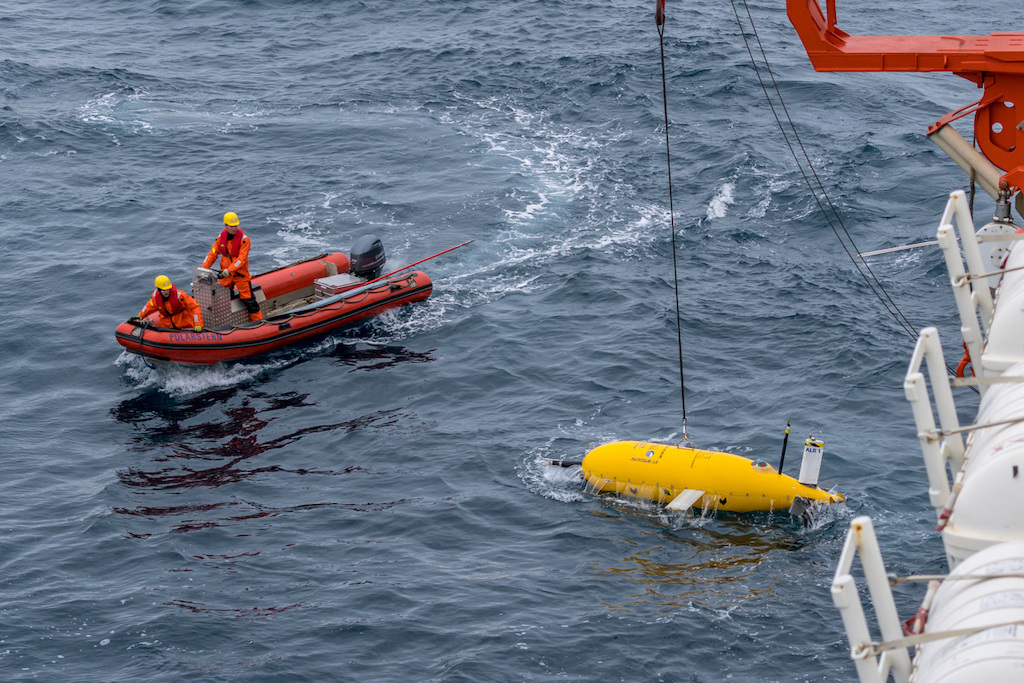
This year, the team is integrating novel lab-on-chip sensors and particulate camera systems to enable scientists to assess how carbon is moving through the ocean. Incredible innovations have been made in the length of coverage AUVs are able to get in specific locations, further enhancing our understanding of the variations between different seasons.
Thwaites glacier and retired oil fields
At the start of 2022, engineers headed out to the Thwaites glacier in Antarctica to help scientists understand the causes of its ice loss in order to better predict how its deterioration could contribute to sea level rise.
Due to unusually thick and dense sea ice around Thwaites, the team carried out their study around the neighbouring Dotson ice shelf.
Boaty McBoatface travelled more than 40km under the ice shelf, measuring ocean currents, turbulence and other properties of the seawater, such as temperature, salinity and dissolved oxygen. This information – which is still being processed – will help us understand the properties of the deep water far under ice shelves and investigate how they are driving the melting processes.
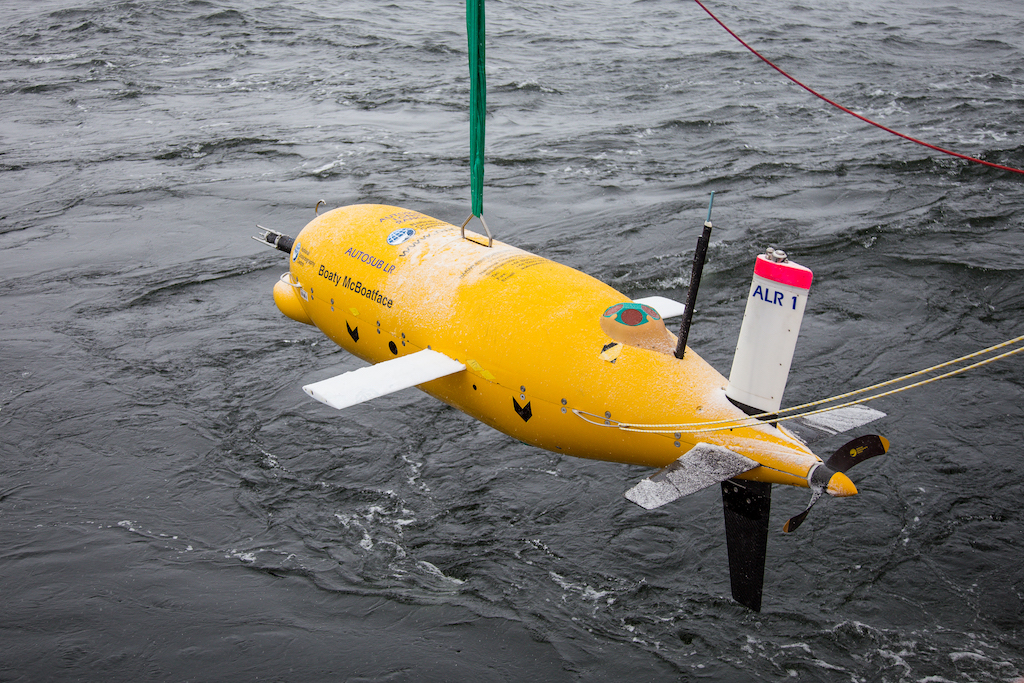
The use of the long-range autosub has been instrumental in changing how we collect important ocean data to understand the effects of climate change.
We have also started trialling the concept of using Boaty for high-tech, low-impact monitoring to pick up any potential environmental impacts at end-of-life oil fields.
In autumn 2022, Boaty was tasked with monitoring industrial sites in the North Sea. The autosub explored several decommissioned oil and gas sites as well as the Braemar Pockmarks Marine Protected Area – gathering data on the water, pollutants and currents, as well as taking images of the sea floor.
As oil and gas sites are wound down, autosubs can play a crucial role in assessing and monitoring marine areas before, during and after decommissioning operations.
The success of this project should enable a revolution in the way in which marine surveys are undertaken supporting industry to transition towards its net-zero targets.
What is next?
This year, the NOC is working to extend the capabilities of our AUVs to support a broader range of science disciplines.
We will be integrating new and novel sensors to equip our autosubs ready to support forthcoming biogeochemical research in the North Atlantic – as well enhancing their autonomy for long-term deployments near and under sea-ice in Antarctica.
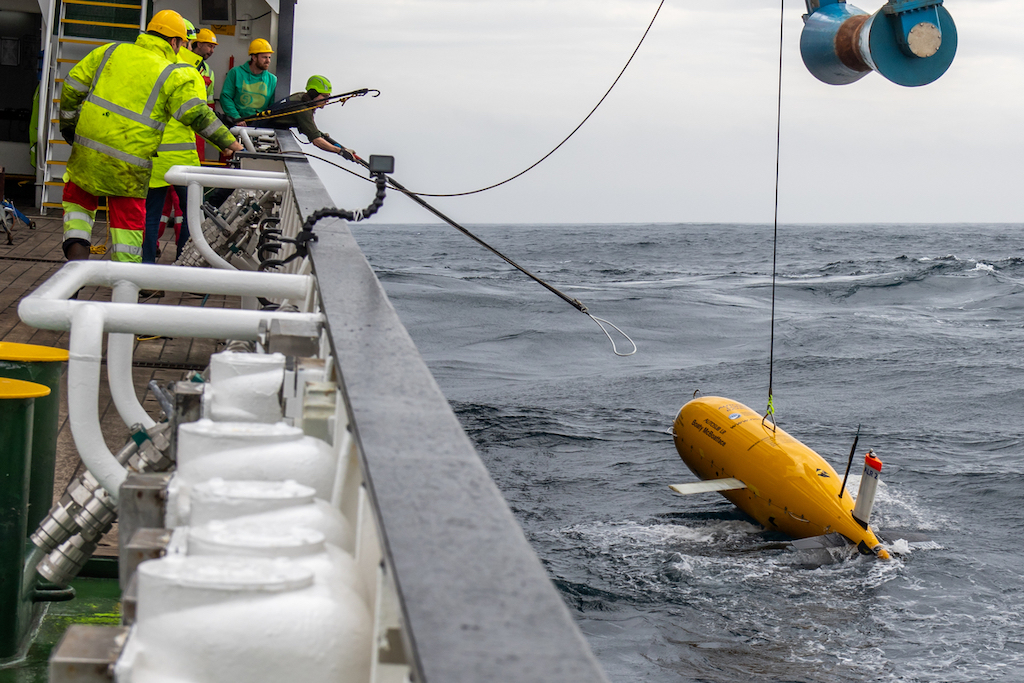
In another project, we are currently working to deliver a new Net-Zero Oceanographic Capability (NZOC) research programme. This aims to develop ocean research capability with a smaller carbon footprint.
This will require a transition in technology that spans from green fuels, automated vessel operations, cutting-edge battery technology, AI optimisation, novel sensor technologies and world-leading robotics.
We are excited to see what other firsts that Boaty McBoatface can achieve in the future.
-
Guest post: How Boaty McBoatface is becoming instrumental for ocean science



